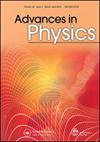Unconventional superconductivity
IF 13.8
1区 物理与天体物理
Q1 PHYSICS, CONDENSED MATTER
引用次数: 189
Abstract
‘Conventional’ superconductivity, as used in this review, refers to electron–phonon-coupled superconducting electron pairs described by BCS theory. Unconventional superconductivity refers to superconductors where the Cooper pairs are not bound together by phonon exchange but instead by exchange of some other kind, e.g. spin fluctuations in a superconductor with magnetic order either coexistent or nearby in the phase diagram. Such unconventional superconductivity has been known experimentally since heavy fermion CeCu2Si2, with its strongly correlated 4f electrons, was discovered to superconduct below 0.6 K in 1979. Since the discovery of unconventional superconductivity in the layered cuprates in 1986, the study of these materials saw Tc jump to 164 K by 1994. Further progress in high-temperature superconductivity would be aided by understanding the cause of such unconventional pairing. This review compares the fundamental properties of 9 unconventional superconducting classes of materials – from 4f-electron heavy fermions to organic superconductors to classes where only three known members exist to the cuprates with over 200 examples – with the hope that common features will emerge to help theory explain (and predict!) these phenomena. In addition, three new emerging classes of superconductors (topological, interfacial – e.g. FeSe on SrTiO3, and H2S under high pressure) are briefly covered, even though their ‘conventionality’ is not yet fully determined.异常超导性
本综述中使用的“常规”超导性是指BCS理论描述的电子-声子耦合的超导电子对。非常规超导性是指库珀对不是通过声子交换而结合在一起的超导体,而是通过某种其他类型的交换结合在一起,例如在相图中磁序共存或附近的超导体中的自旋波动。自从发现具有强相关4f电子的重费米子CeCu2Si2在0.6以下超导体以来,这种非常规超导性已经在实验中被发现 K在1979年。自1986年在层状铜酸盐中发现非常规超导性以来,对这些材料的研究使Tc跃升至164 K。了解这种非常规配对的原因将有助于高温超导的进一步进展。这篇综述比较了9类非常规超导材料的基本性质——从4f电子重费米子到有机超导体,再到只有三个已知成员的类别,再到200多个例子的铜酸盐——希望能出现共同的特征来帮助理论解释(和预测!)这些现象。此外,还简要介绍了三类新出现的超导体(拓扑、界面——例如SrTiO3上的FeSe和高压下的H2S),尽管它们的“常规性”尚未完全确定。
本文章由计算机程序翻译,如有差异,请以英文原文为准。
求助全文
约1分钟内获得全文
求助全文
来源期刊

Advances in Physics
物理-物理:凝聚态物理
CiteScore
67.60
自引率
0.00%
发文量
1
期刊介绍:
Advances in Physics publishes authoritative critical reviews by experts on topics of interest and importance to condensed matter physicists. It is intended for motivated readers with a basic knowledge of the journal’s field and aims to draw out the salient points of a reviewed subject from the perspective of the author. The journal''s scope includes condensed matter physics and statistical mechanics: broadly defined to include the overlap with quantum information, cold atoms, soft matter physics and biophysics. Readership: Physicists, materials scientists and physical chemists in universities, industry and research institutes.
 求助内容:
求助内容: 应助结果提醒方式:
应助结果提醒方式:


